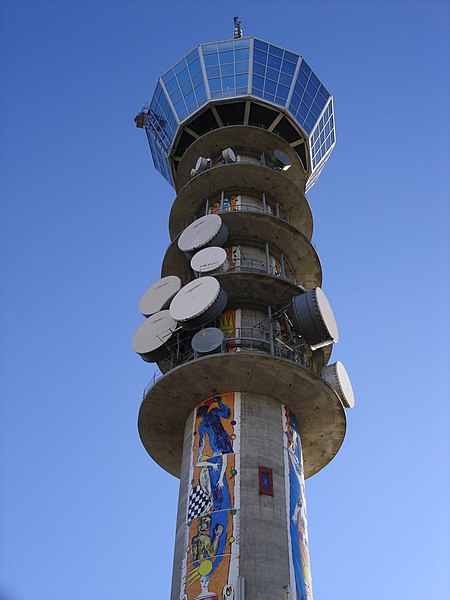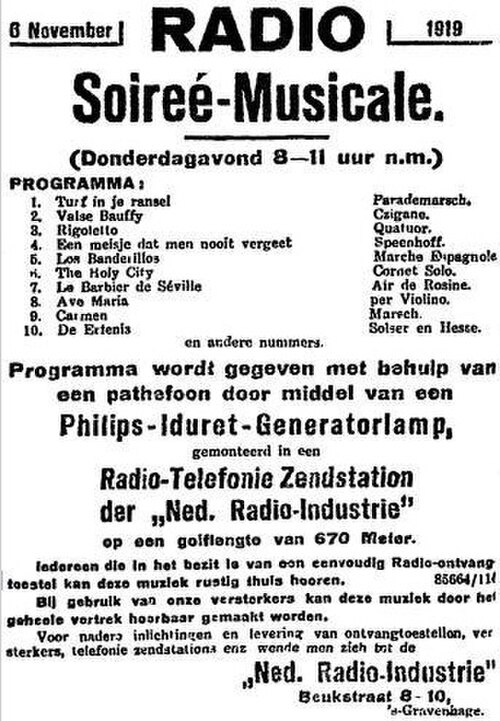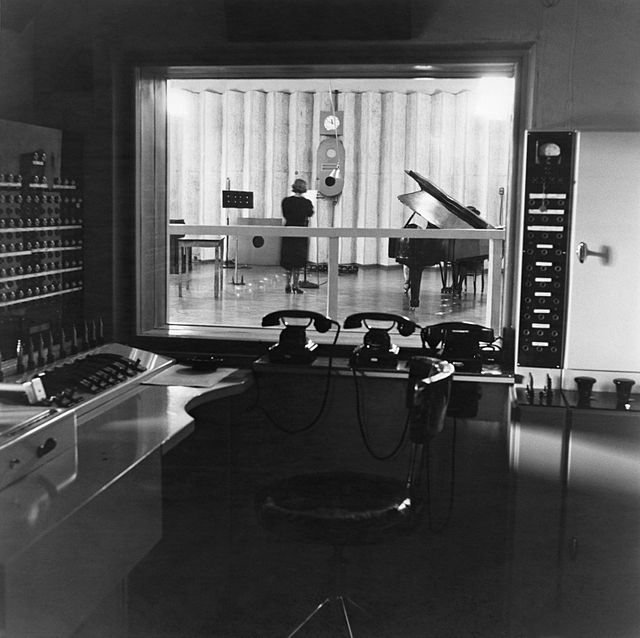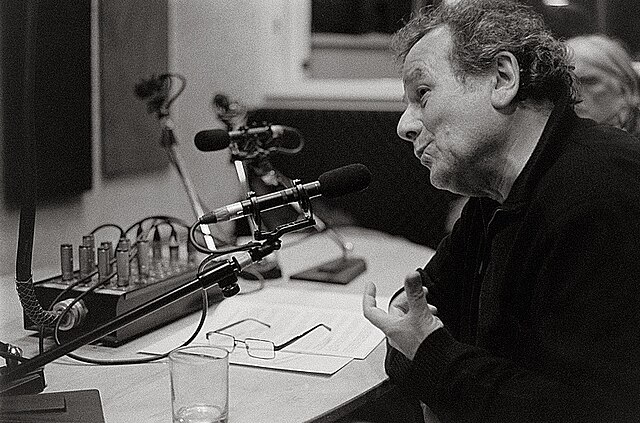2MT was the first British radio station to make regular entertainment broadcasts, and the "world's first regular wireless broadcast" for entertainment. Transmissions began on 14 February 1922 from an ex-Army hut next to the Marconi laboratories at Writtle, near Chelmsford in Essex. Initially the station only had 200 watts and transmitted on 700m (428 kHz) on Tuesdays from 20:00 to 20:30.
2MT Writtle Centenary Card
Radio broadcasting is the broadcasting of audio (sound), sometimes with related metadata, by radio waves to radio receivers belonging to a public audience. In terrestrial radio broadcasting the radio waves are broadcast by a land-based radio station, while in satellite radio the radio waves are broadcast by a satellite in Earth orbit. To receive the content the listener must have a broadcast radio receiver (radio). Stations are often affiliated with a radio network that provides content in a common radio format, either in broadcast syndication or simulcast, or both. Radio stations broadcast with several different types of modulation: AM radio stations transmit in AM, FM radio stations transmit in FM, which are older analog audio standards, while newer digital radio stations transmit in several digital audio standards: DAB, HD radio, DRM.
Broadcasting tower in Trondheim, Norway
Advertisement placed on November 5, 1919, Nieuwe Rotterdamsche Courant announcing PCGG's debut broadcast scheduled for the next evening
Control room and radio studio of the Finnish broadcasting company Yleisradio (YLE) in the 1930s.
Use of a sound broadcasting station





